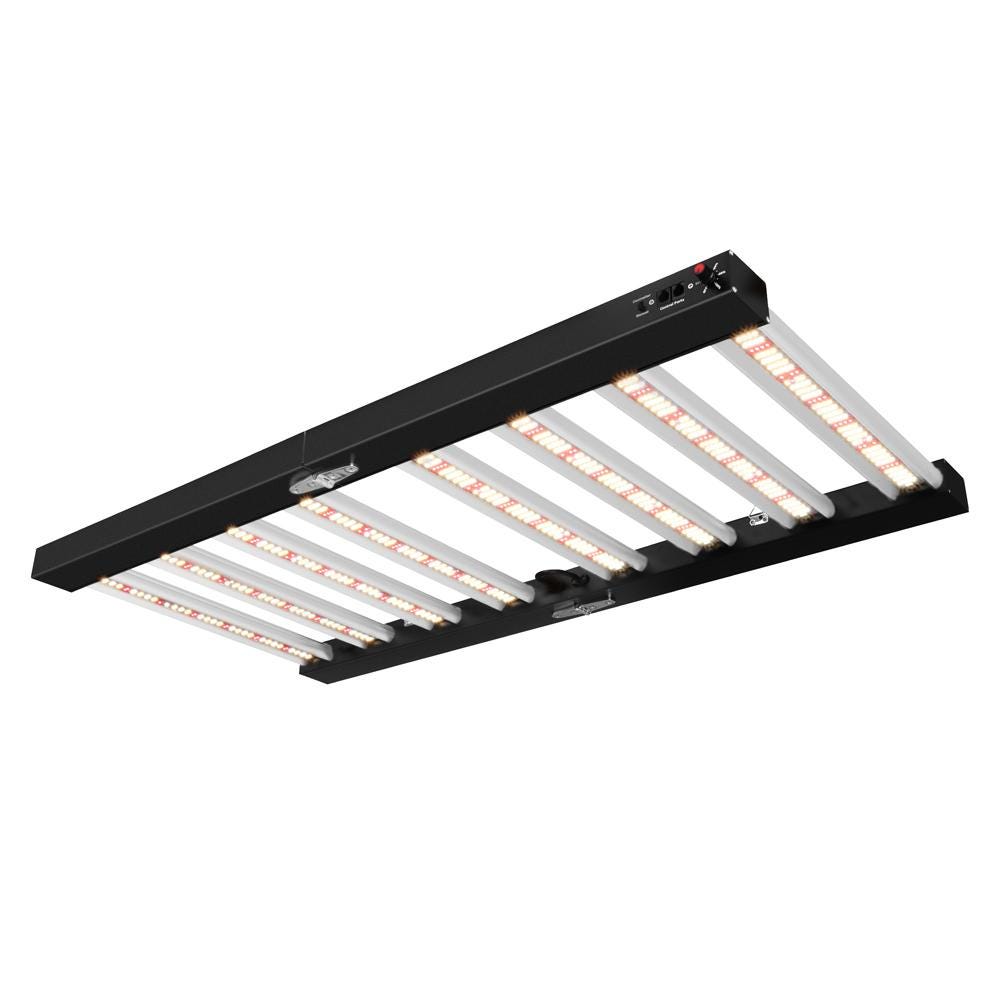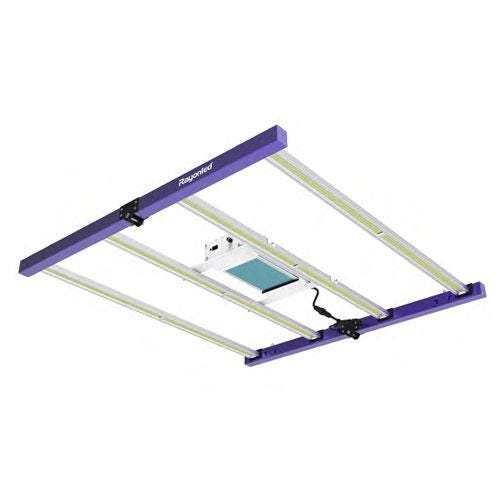Can You Use Regular LED Lights to Grow Plants?
[PR]上記の広告は3ヶ月以上新規記事投稿のないブログに表示されています。新しい記事を書く事で広告が消えます。
Can You Use Regular LED Lights to Grow Plants?
The LED grow light is the newest artificial lighting option on the market and there’s a lot of hype around it. If you’re an indoor gardener, you may be wondering if LED lighting compares favourably to traditional fluorescent and incandescent lighting. We’ve done the research so we could answer your most pressing questions about LEDs and plant growth.
Can I use regular LED lights or do I need LED grow lights?
You can use regular LEDs but you’ll get better results with LED grow lights.
LED bulbs and strips usually produce white light, which is helpful for general plant growth. However, plants really need blue and red light to thrive. LED grow lights come in a spectrum of colours and a wider range of wattages than regular white LEDs.
Since regular white LEDs are cheaper than LED grow lights, you can always experiment with them first. Plants will certainly grow under white LED lighting, but they probably won’t thrive.
Why use grow lights?
Plants need light to carry out photosynthesis, converting carbon dioxide and water into food to fuel growth. We humans need to consume a certain number of calories each day. So too with plants — plants need a certain volume of photons each day. How much varies with species and stage of growth.
Picture plants that get tall and ‘leggy’ — leaning and stretching towards a window. Without adequate light, your seedlings will get lanky and weak, struggling to produce enough food to grow into healthy plants.
Best 400W LED Grow Lights Recommend
ECO Farm SP-400 Samsung Foldable Dimmable Full Spectrum LED Grow Light

Features:
This ECO Farm LED grow light uses 1088pcs high efficient Samsung LM281B LEDs, full-spectrum sunlight with higher PAR. This LED grow light has a full spectrum consisting of LM281B leds(3000k+5000k) +RED 660nm+IR 730nm +UV 395nm, which is great for producing more flowers and healthier buds to achieve the absolute best harvest. The high efficiency with 2.8 umol/j while only consuming only 420watts. More uniform coverage. Perfect for covering a 7x4ft growing area in the Veg stage and 5x3ft for the flowering stage. The newly designed aluminium material quickly disperses heat without a noisy fan. This grows light also has an optional Touch Screen Controller, ideal for Group Control (max 100 lights) &Timing and Dimmable Function. This dimmable LED grow light so that you can adjust the brightness without frequently changing the position of the light.

Features:
This LED grow light offers 3.5 times improved light distribution to the plants. It helps you get excellent returns from your grow room. The external driver of the new X-series provides a 25% reduction in the heat output and a 60% reduction in the weight of light. Precise IR/UI control boosts potency and terpenes in plants to unlock your plants’ complete potential and maximize output. Kind LED X420 grow light offers 2 X boosted PPF for faster and healthier growth of plants. This Kind of LED grow light also has put this spectrum as an independently controlled channel. It offers users full control over the Ultraviolet and Infrared rays. Therefore, the grower can decide when to use these rays. It helps them avoid unnecessary stretch, remove the wasted energy, and increase metabolites (that boosts both terpenes and potency).
Rayonled GLMF400W LED Grow Light

Features:
This LED Grow Light’s Input Power is 400w but has High PPFD. It redefined engineering real full spectrum led grow light strips hydroponics from veg to bloom for indoor plants grow. It is ideal for beginner or professional growers choice. The full spectrum design of this grow light provides nutrients for each stage of plants, which is perfect for germination, seedling, indoor growing. One 400W grow light is equal to a complex 800W HPS grow system, making indoor planting become more convenient. It is also a noise-free fanless LED grow lamp for indoor plants. All casing is a heat sink. This LED grow light will provide high performance, long-lasting and energy-saving for general purpose use.
Common Mistakes To Avoid When Growing With LED Grow Lights
LED grow lights are quickly beginning to dominate the industry. However, once growers make the switch and buy LED grow lights, they often forget to take new factors into account. In this article, we will review some common mistakes to avoid when growing with LED grow lights.
Hanging Lights Too High
Many growers who switch to LED lights often hang the lights too high above the canopy. While a 24–30 inch mounting height may be typical for HPS/CMH lights, this is an improper mounting height for LED grow lights. This close proximity is possible because they produce substantially less heat than their HPS counterparts. Additionally, the evenly spaced diodes in our design allow there to be an even light distribution over the grow area, even at these much narrower mounting heights.
You can choose to mount your lights higher during the vegetative stage since the target PPFD is lower, or you can raise them a little if you are looking for a slightly more even distribution of light. The higher you mount your light during flowering, the less light will reach your plants due to absorption in the air and light scattering. So the ideal way to use an LED light is to place it as close as possible to the canopy without burning the plants. In well-ventilated areas, we have found the mounting height to be as close as 6 inches. If you do choose to hang your lights higher than 12 inches, this will be at the cost of losing light density and ultimately yield.
Using Incorrect Light Spectrum
Before investing in any grow light, understanding the light spectrum is vital to understanding what is best for your plants. A grow light should provide a light spectrum that best drives photosynthesis in plants, which can be done by replicating natural sunlight, which is a full spectrum of light wavelengths. While red and blue light is the most well-known for stimulating plant growth, additional wavelengths of light, such as green and yellow, also are used and needed during photosynthesis. To get the most well-rounded growth it is important to get a full spectrum of light that has a combination of all wavelengths and colours. For example, the fact that green light is less easily absorbed by plant cells actually can benefit the plant because instead of the green light being absorbed by the already oversaturated leaves at the top of the canopy, it can penetrate deeper into the plant and deliver light to areas that were otherwise being ignored.
When LEDs first got introduced to the indoor horticulture market, they only produced red and blue lights, making them known as “smurf” or “blurple” lights. While these lights might still get the job done, they are not as high calibre as full-spectrum LED lights and will not produce as high yields or as healthy plants. This gave early LEDs a bad reputation. When switching to LED, it is important to get a fixture that has full-spectrum light and maximizes plant growth.
Low-Quality LEDs
LED lights were introduced into the indoor horticulture market much later than HPS/CMH lights, and at first, they could not compete with the high light output. However, advancements in LEDs have evolved in recent years to produce extremely high outputs that not only compete with — but surpass — their HPS counterparts. Unfortunately, many of these poor-quality lights still exist out there and are not capable of producing the high light output required for maximizing plant growth and yield.
To ensure you are getting a high-quality light that will perform adequately, it is important to not only look at the wattage of the fixture, but also the light output (PPF). Wattage only specifies how much power the light uses, but not how much light output it actually produces for the plants, which is the best way of evaluating a light’s effectiveness. Make sure the light is powerful enough to produce an average PPFD of at least 500 µmol/m2/s for the vegetative stage and >900 µmol/m2/s for full-cycle grows and flowering stages — but the higher the output, the better!
Overwatering
Another common mistake when switching from HPS/CMH to LED grow lights is overwatering. This is because HPS/CMH lights run much hotter than LEDs, in addition to producing more infrared light, which causes the plants and soil to dry out much faster. This causes the watering routine to be heavier and more frequent than what would be needed under LED lights. When switching to LED, make sure to check your soil and monitor your plants before continuing with the same watering routine.
Conclusion
The future of horticultural lighting going forward is owned by LEDs. No longer a novelty or research tool, they are finding their way into the mainstream. Even with how far they have come over the last 10 years, there is still much farther for them to go. There are still applications or situations where they might not make the most sense for all growers.
For growers that do not grow year-round, or have fallow periods in their grow rooms, LEDs may not be the best bet. The value in LEDs is realized when they are used often. The more hours LEDs operate, the quicker the ROI in electricity savings and maintenance costs.
In grow rooms and greenhouses where the lighting must be hung high, more traditional types of lighting may be more appropriate as well. LEDs are, however, proving to be the most efficient and effective choice in vertical farming applications where they are taking a central role.
As the trend of vertical and indoor farming continues to gain popularity, so does the use of LED lighting in those environments.
